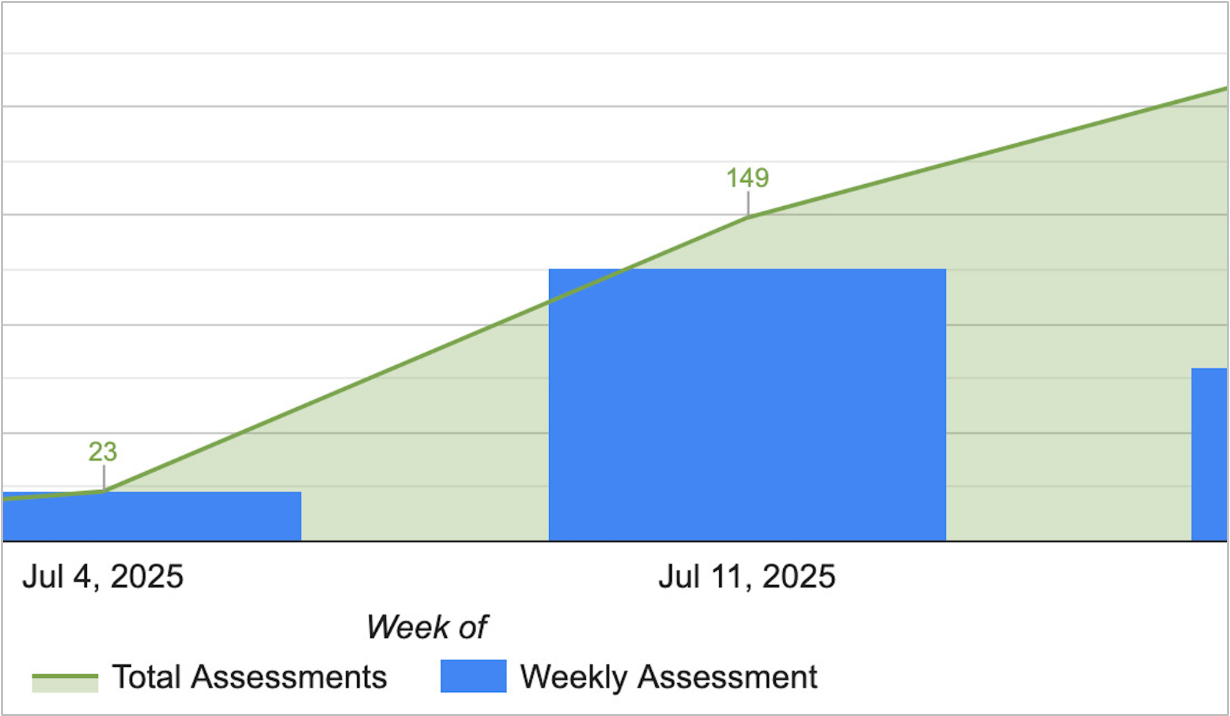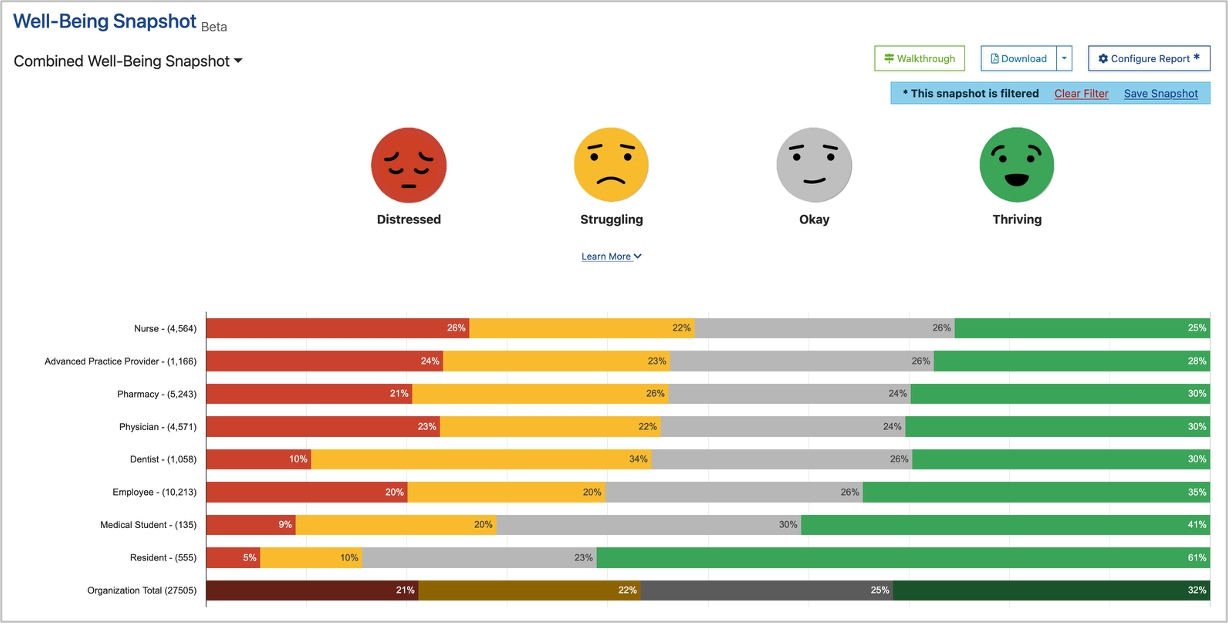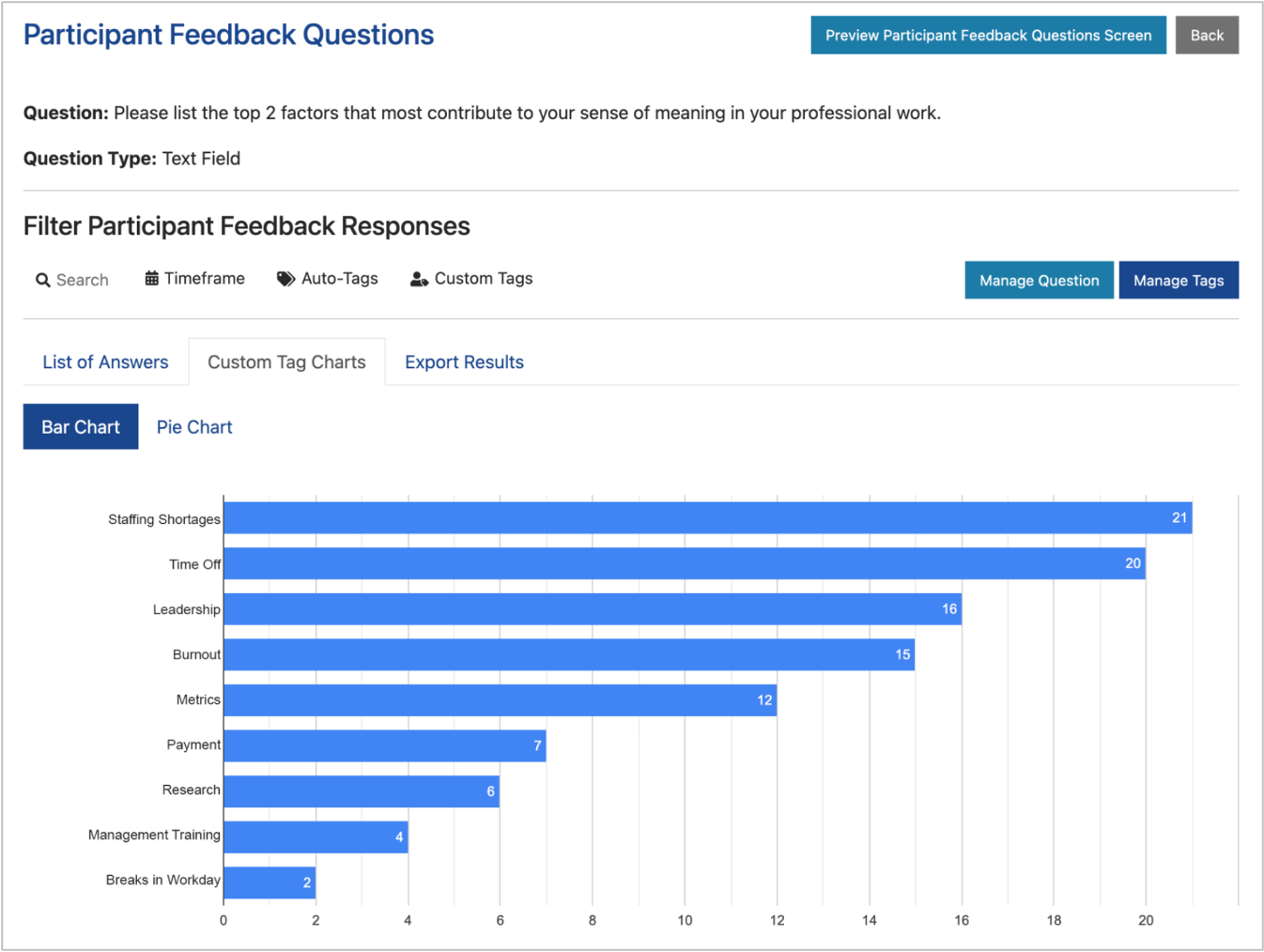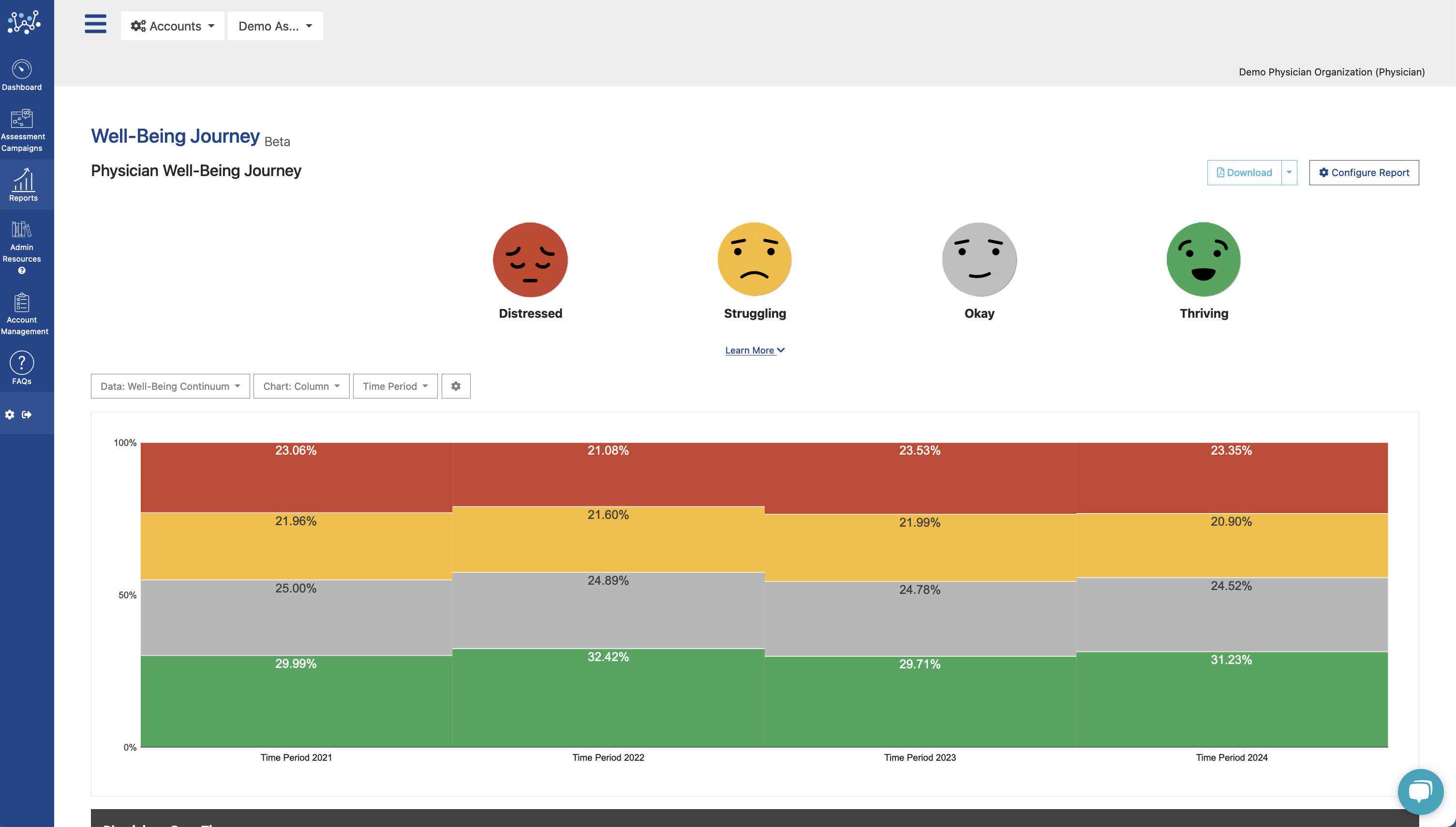In 2007, Dr. Michal Rozien made headlines when he took on what was, at the time, a rather unique job title: Chief Wellness Officer (CWO) of the Cleveland Clinic. Around that same time, Mayo Clinic launched its Program on Physician Well-being, an organizational commitment to finding evidence-based burnout-combatting practices. These vanguard institutions saw clearly that, as with financial, strategic, and human resource decision-making, workplace wellness requires leadership.
What is a Chief Wellness Officer?
During a 2021 panel discussion about burnout in healthcare settings, Dawn Clark, a practicing OB-GYN and CWO of the Southern California Permanente Medical Group cited a 2018 survey conducted by NEJM Catalyst in which 82% of respondents agreed that burnout intervention strategies should be targeted at the organizational level.
This is where CWOs operate. They leverage their vantage point in your organization’s structure to provide a workplace wellness-first perspective to high-level decision-making. Though their daily work touches the lives of nearly every employee in the organization, CWOs do not typically work one-on-one with staff. Rather than building wellness individual by individual like a therapist, CWOs build workplace wellness into the very fabric of the institutions they serve.
“This makes sense because, as we have already stated, burnout is an occupational phenomenon. It is a mismatch between workload and resources,” Clark said.
Resource problems require an organizational-level analysis, and having a CWO at the table imbues that decision-making with a wellness-first perspective.
In an article published in April 2021 in the NEJM Catal Innov Care Deliv., the authors note that well-intentioned actions by leadership can be construed as unhelpful if delivered without guidance from a CWO.
“The impact was that messages from executive leaders to healthcare workers were not always perceived as supportive of healthcare worker well-being.”
The article cites this example: during the COVID-19 pandemic, a healthcare organization increased limits on annual carry-over of leave hours. The measure was intended as encouragement for workers who might postpone a vacation until the initial surge of the pandemic had subsided. Staff, however, saw the new policy as a signal from leadership – a signal that said time off was unnecessary.
[RELATED: Organizational Wellness Structure Roadmap – A visual guide to help organize your teams]
Workplace wellness leadership is separate from HR
Though their worlds intersect, human resource professionals and wellness officers are not synonymous.
As explained in a 2020 article by Jonathan Ripp, MD, MPH and Tait Shanafelt, MD, “..the CWO is not the chief human resources officer and his or her focus is not primarily on compensation, benefits, health plans, performance evaluations, or organizational structures.”
The same is true regarding disciplinary matters or anything that might hinder a CWO’s effectiveness at aiding staff in need of support (who may have higher rates of disciplinary incidents). And while matters like healthcare quality, patient experience, inclusion, and diversity can fall within their purview, they should not be made additional primary responsibilities.
A CWO’s focus is on advancing the practice environment and organizational culture. They manage resources, devise workload management methods, and work with their wellness teams to create and implement strategic initiatives.
The Ripp and Shanafelt study further concludes that “there is a high likelihood that no meaningful progress will occur if organizational efforts to promote well-being are simply added to the duties of other leaders who already have expansive responsibilities and whose focus inherently lies elsewhere.”
This is not to say workplace wellness cannot be achieved without a CWO. In fact, the means of accomplishing this via committee are explored in a case study about the Common Spirit network’s sprawling wellness program built using Mayo Clinic-developed workplace well-being tracking technology.
[CASE STUDY: Creating a New Wellness Culture in a 21-State Health System]
CWOs find executive-level opportunities
A CWO focused on the organizational approach to wellness can also keep an eye out for opportunities, like those created by the Dr. Lorna Breen Health Care Provider Protection Act. This act, signed into law in 2022, creates grants and requires action to improve the mental health and wellness of healthcare professionals.
The Department of Health and Human Services has been tasked with awarding grants to healthcare organizations for programs that promote wellness among their employees. Having an executive with their eyes on these kinds of issues can provide solid strategic footing for the future.
[RELATED: Economic Cost of Burnout Guide – The business case for investing in clinician well-being]
Conclusions from the C-suite
Of the myriad ways burnout is mitigated, the most commonly covered focus on individualized approaches to employees with a focus on resilience, mental health, and similar skill sets. Less commonly acknowledged are the organizational barriers to well-being, which CWOs are perfectly positioned to break down. Their view of your organization from a wellness standpoint, combined with their position within the organization’s decision-making hierarchy, gives weight to any commitments made to workplace wellness.
“The goal of this work is to address what is wrong with the practice environment, not to make individuals better able to tolerate a broken system,” says the previously cited Ripp and Shanafelt article.
Though relatively new as a position, the CWO executive, if equipped with the tools necessary to diagnose your organization’s barriers to workplace wellbeing, is among the most effective ways to guide decisions toward more burnout-proof stability.
Citations:
1. Swensen S, Strongwater S, Mohta NS. Leadership survey: Immunization against burnout. NEJM Catalyst. 2018;4(2). 10.1056/CAT.18.0209
2. Davino-Ramaya, C. M., Lippy, S. H., Naturale, A., Corey Feist, J., Cipriano, P., & Clark, D. (2023). Burnout and the Effect on the Global Health Care Workforce Crisis: An Expert Panel Discussion. The Permanente journal, 27(2), 111–122. https://doi.org/10.7812/TPP/23.053
3. Brower, K. J., Brazeau, C. M. L. R., Kiely, S. C., Lawrence, E. C., Farley, H., Berliner, J. I., Bird, S. B., Ripp, J., & Shanafelt, T. (2021). The Evolving Role of the Chief Wellness Officer in the Management of Crises by Health Care Systems: Lessons from the Covid-19 Pandemic. Nejm Catalyst Innovations in Care Delivery, 10.1056/CAT.20.0612. https://doi.org/10.1056/CAT.20.0612
4. Ripp, Jonathan MD, MPH; Shanafelt, Tait MD. The Health Care Chief Wellness Officer: What the Role Is and Is Not. Academic Medicine 95(9):p 1354-1358, September 2020. | DOI: 10.1097/ACM.0000000000003433







